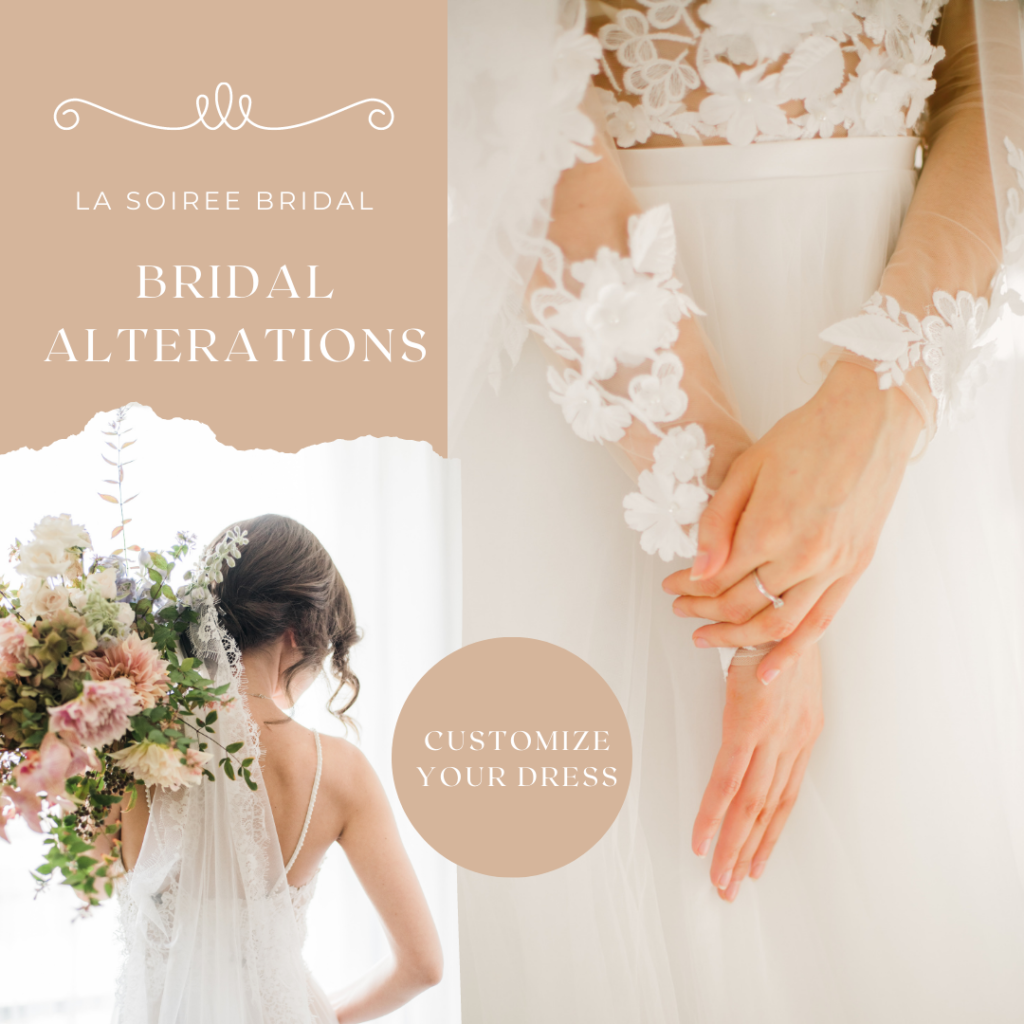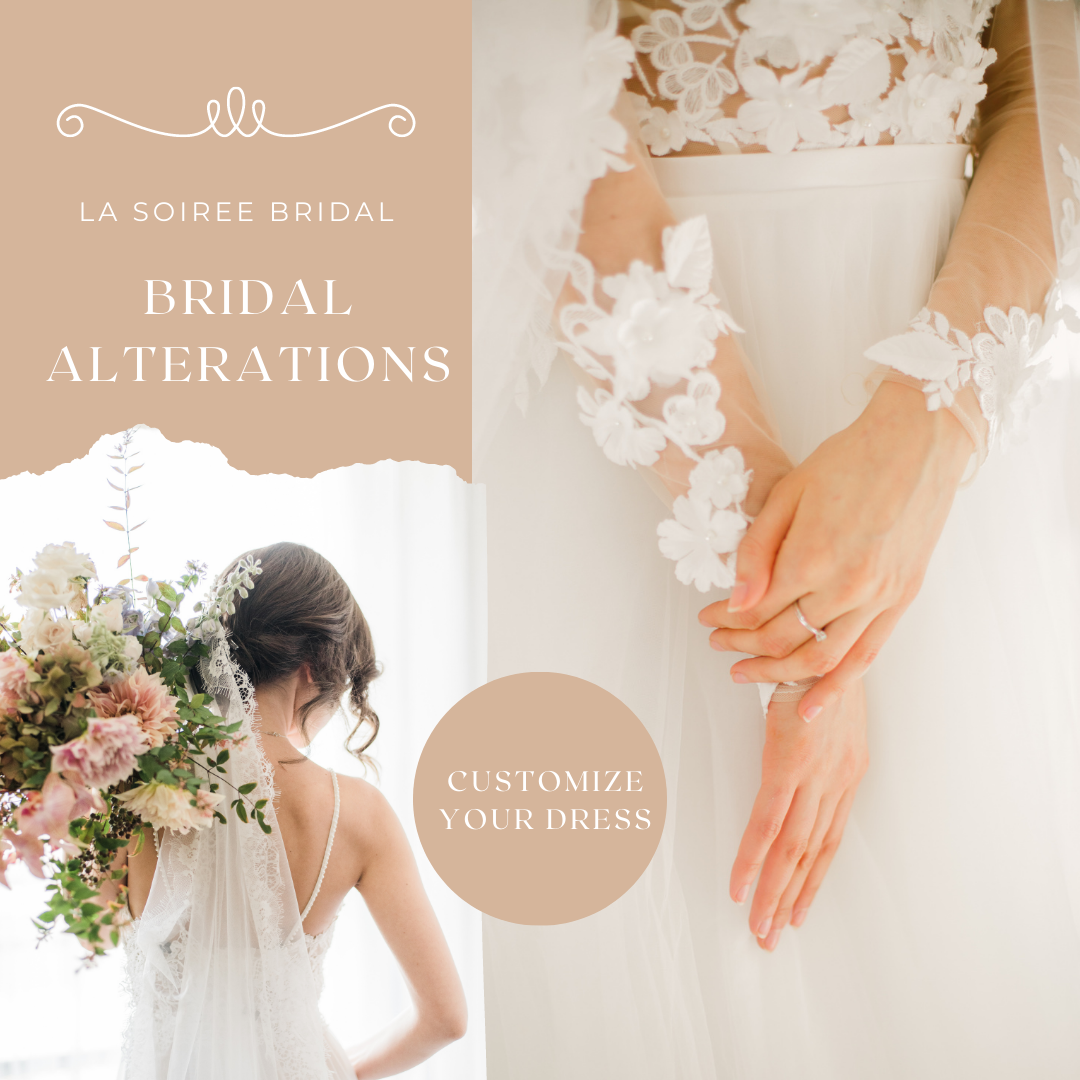
Many first time brides are surprised to find that their dream wedding dress requires alterations after purchasing it (which also means unexpected spending!). There seems to be a misconception that wedding dresses are custom-made to fit the bride’s exact measurements. This may be true for some designers but the majority of designers offer “made-to-order” dresses rather than “made-to-measurement”. This means that designers only produce the gown once an order is placed and it is made according to the standard size chart that the order was placed for. In these instances, the designers do not custom make the dress according to your exact measurements.
This is where seamstress comes to save the day! There are so many different types of alterations that you can make to your dress and the possibilities are endless. This blog post lists out some of those possibilities:
- Hemming the length: most bridal gowns are made for a 5’10” woman; those who are shorter or taller than this will definitely need alterations.
- Most often, we find that brides need to hem their dress to shorten it to fit. Things to keep in mind if you need to hem your dress includes: keeping the lace trimming on the bottom of your dress, the compression of the design (i.e. if your dress has intricate lace appliques or beading that will now be closer together than before) and the layers of fabrics that will need to be hemmed. An alternative would be to modify the waist area and leave the bottom design the same. This would require taking the bodice and the skirt apart and readjusting both pieces to refit.
- Other areas where you may need to shorten the dress is in the bodice (i.e. if you have a shorter torso). When this happens, you’ll see bunching in the stomach area or fabric coming out of the sides or curling of the top bodice. In these instances, your seamstress will need to modify the arm holes, top straps or waist area. Again, each dress is going to be different so you will need to consult with your seamstress as to the best approach but know that modifying the bodice will require taking apart several pieces of the bodice.
- Taking in the dress to make it smaller: if you are in-between bridal sizes, we recommend that you go with the larger size as it is easier to take in a dress than it is to expand it. Depending on the style of the gown, making a dress smaller consists of taking in the side seams or the princess seams (the seams in the front of the bodice) and sometimes the back area.
- Letting out the dress to make it bigger: If you’ve purchased a dress that is too small, know that there are options to expand the dress to fit. This includes adding additional fabric by the side seams or replacing the back zipper with a corset back.
- Adding draped straps or sleeves: If you want draped sleeves or long sleeves added, your bridal boutique can typically order matching lace fabrics from the designer so that our seamstress can create the straps or sleeves.
- Changing the necklines
- Adding in built-in bras or bust pads
- Adding a beaded belt
- Adding an illusion neckline or back
- Adding pockets
- Adding liners to sheer bodice
- Straitening a wavy back zipper or button
- Lowering the back of a wedding gown
- Adding or removing embellishments
- Add hanger loops
- Creating a bustle
There are many talented seamstresses in the Michigan area who specializes in wedding dresses. Find one that you can trust and they can make the magic happen! Although we don’t offer in-house alterations, we are happy to recommend you to some of the local seamstresses.
Disclaimer: I am by NO MEANS a seamstress nor do I have the talent and skills to ever become one. Please consult a seamstress for professional advice. This blog post is simply a basic overview of the possible alterations that you can make to your wedding dress. Given that each dress is constructed differently, we recommend that you consult your seamstress.
